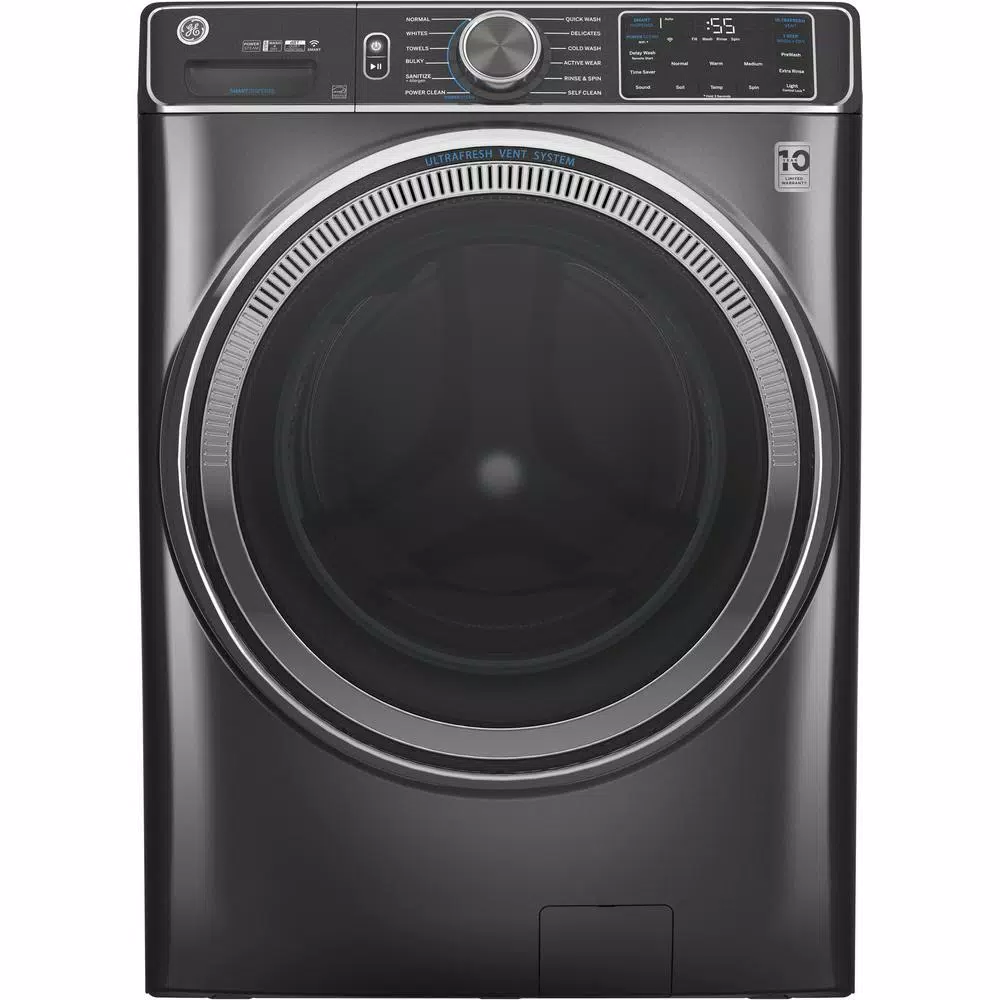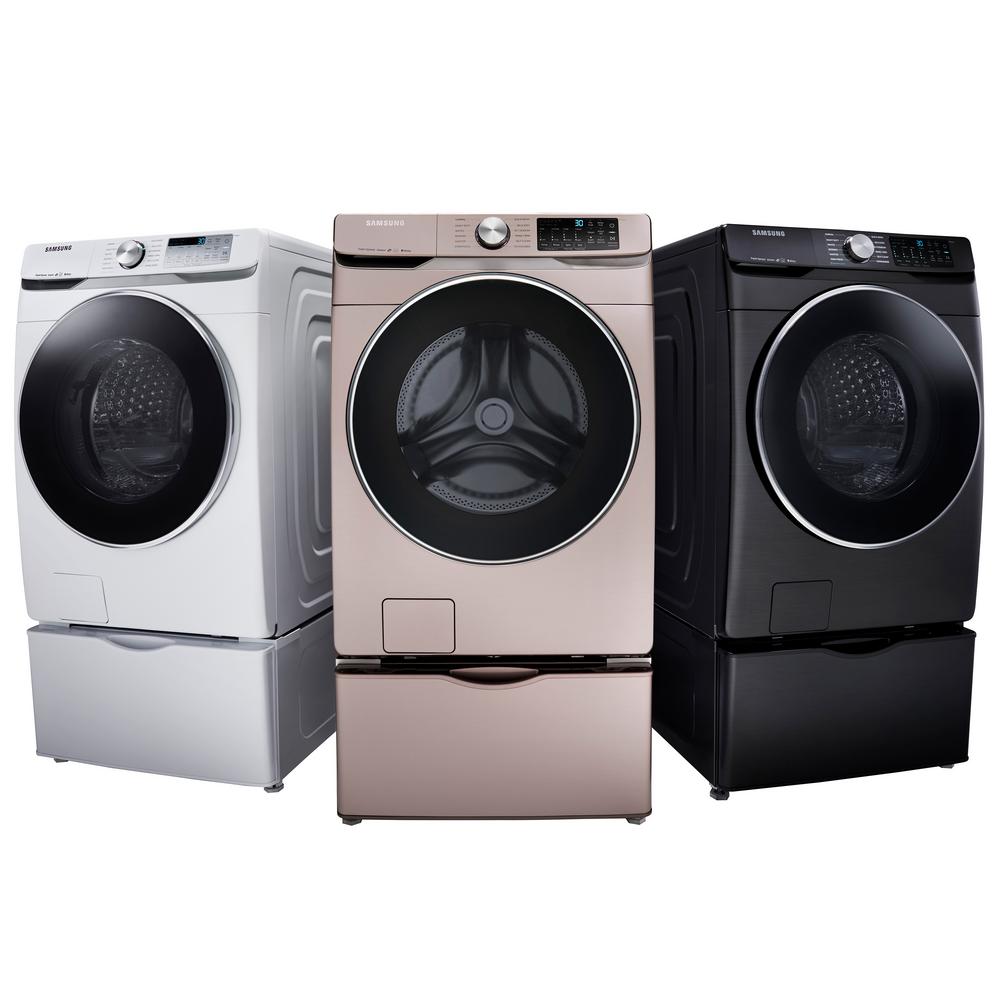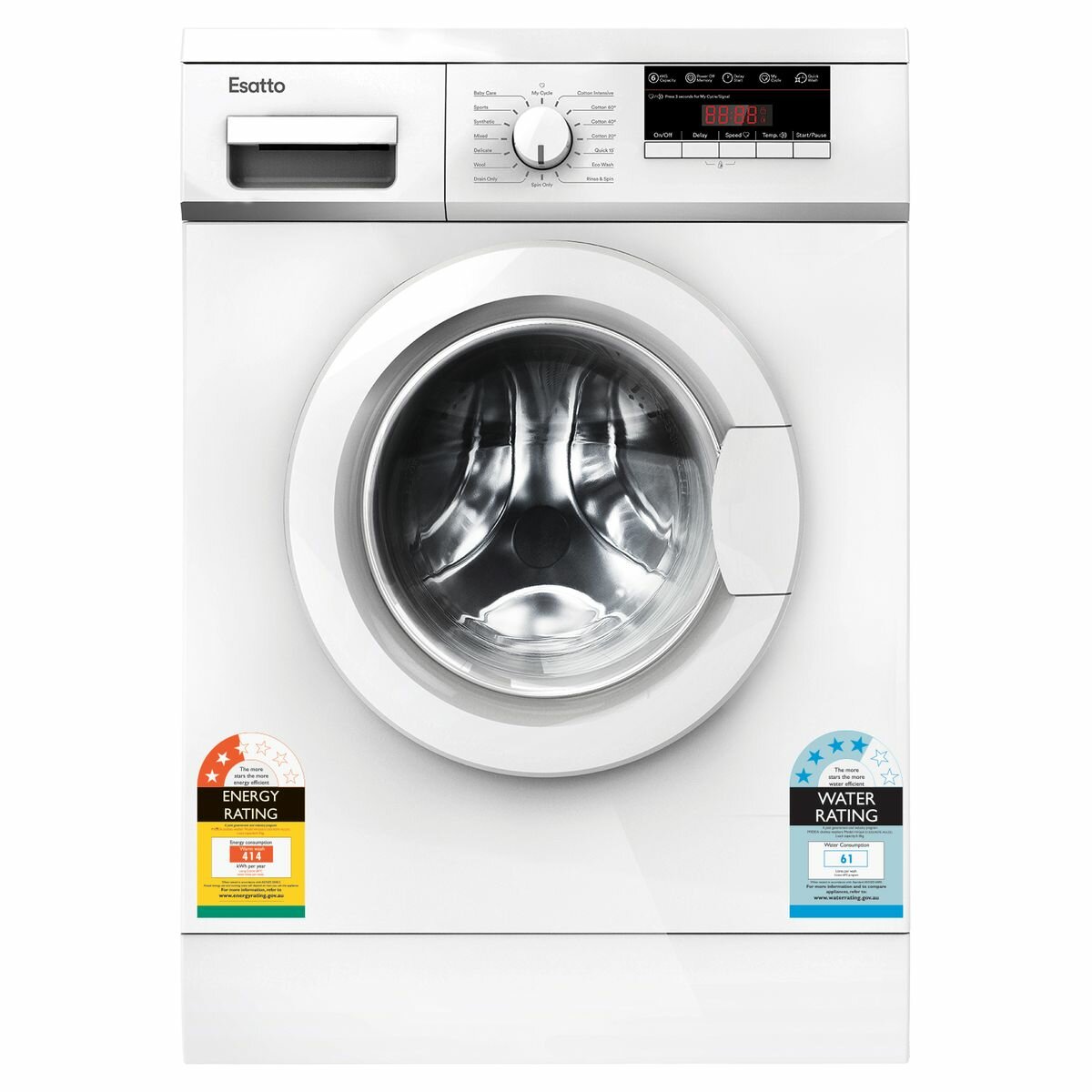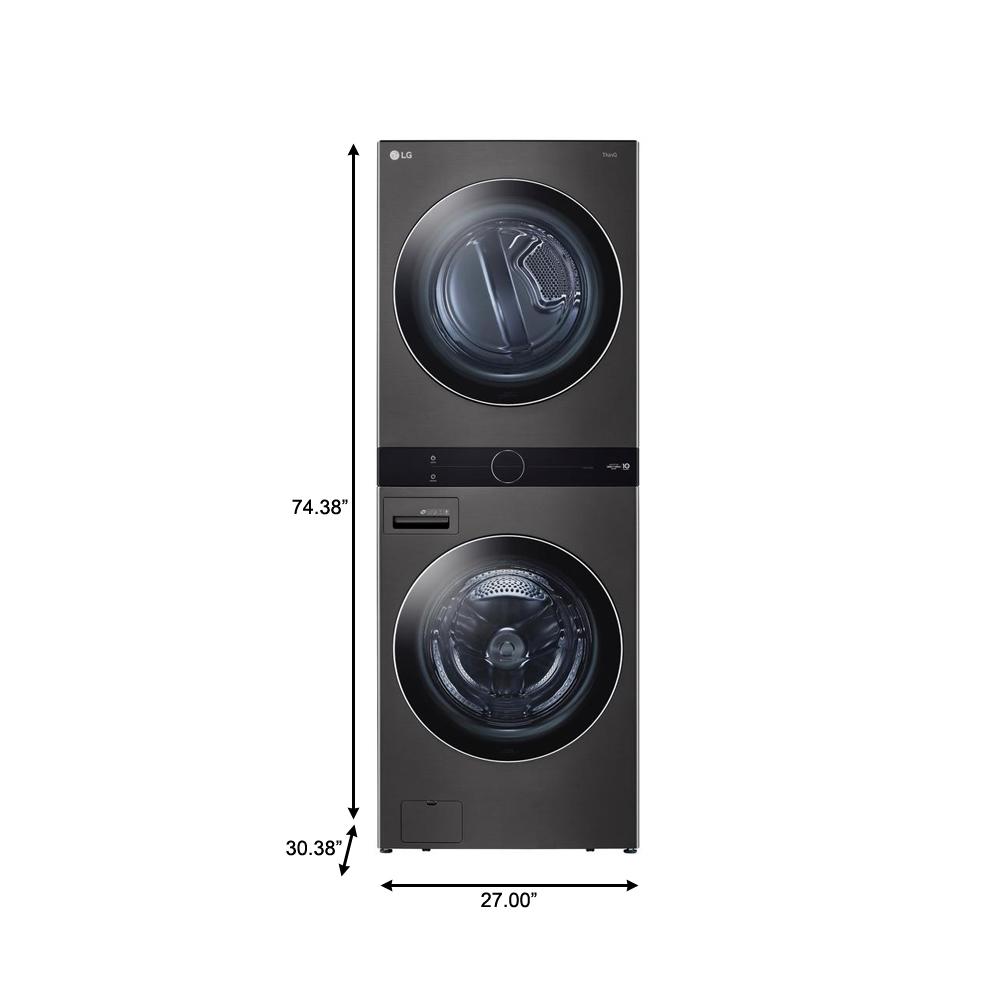GE 5.0 cu. ft. Diamond Gray Front Load Washing Machine with OdorBlock UltraFresh Vent System with Sanitize and Allergen
Vent System prevents odors ensuring your washer is always fresh. SmartDispense stores and automatically dispenses detergent. 1 Step Wash + Dry eliminates need to transfer clothes to dryer.
GE appliances provides up-to-date technology and exceptional quality to simplify the way you live. With a timeless appearance, this family of appliances is ideal for your family. And, coming from one of the most trusted names in America, you know that this entire selection of appliances is as advanced as it is practical.
- UltraFresh Vent System With OdorBlock – The first and only UltraFresh Vent System with OdorBlock eliminates excess moisture to help prevent odors ensuring your washer stays fresh and clean
- Microban antimicrobial technology – Built into components including the gasket, dispenser and draining system delivering protection that lives on load after load
- SmartDispense Technology – Save time and make laundry effortless with an intelligent dispenser that holds up to 32 loads of detergent and automatically dispenses the right amount each time
- 1 Step Wash + Dry – Wash and dry a small load in your washer, eliminating the need to transfer clothes to the dryer
- Built-in Wi-Fi – Start, stop and monitor your laundry from anywhere while receiving real-time notifications and updates
- Dynamic Balancing Technology (dBT) – Our patented, time saving technology senses and re-balances uneven loads during the spin cycle, providing a quiet wash
- Reversible Door – Easily reverse your washer and dryer door for superior installation flexibility
- PowerSteam – Safely penetrates deep into fabric fibers, loosening stains to deliver enhanced cleaning performance
- Sanitize + Allergen – Industry-first cycle sanitizes fabrics to kill 99% of common bacteria and allergens such as dust mites
- Time Saver-When you need to Get a full load of clothes clean in only 37 minutes
- Internal water heater – Increases wash temperature to reduce bacteria and provide better cleaning for the really tough stains
- Quick Wash Cycle – Provides a fast 20 minute wash for lightly soiled items
- Approximate Dimensions (in.) – 39-3/4 in. H x 28 in. W x 34 in. D
- Limited 1-year entire appliance warranty
Additional information
| Capacity - Washer (cu. ft.) | 5 |
|---|---|
| Depth With Door Open 90 Degrees (In) | 56.5 |
| Door Opening Height (In.) | 22.5 |
| Door Opening Width (In.) | 22.5 |
| Product Depth x Height x Width (in.) | 34 x 39.75 x 28 |
| Certifications and Listings | ADA Compliant,Energy Star,UL Listed |
| Manufacturer Warranty | Limited 1-year entire appliance |






by Mike
I rave about GE appliances because they truly are the BEST! I wasn’t sure about the auto dispense when I bought this machine but now I LOVE it and won’t go back to measuring ever again. Auto dispense is especially awesome so kids can do laundry and you don’t have to worry about how much detergent they are putting in the washer!!!!
by Howard
Washes great, love it.
by Samo
Great washer with very nice features.
by Patricia
Everything went well! The washer is beautiful and the delivery men did an outstanding job!
by Justin
This washer appears to wash clothes very well.
by Curt
Worked great the first couple of weeks then the washer started bagging and sounding like a jet engine when spinning so have a service call scheduled little disappointing only had 5 weeks for a family of 2.
by Kenneth
Lots of great features washes great cold water cleaning is tip top.